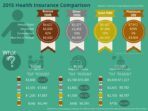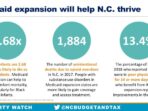Us Health Insurance Explained – It takes about 30-40 minutes to complete this module. At the end of this module you will be able to …
Complete the following checks before learning and try your knowledge. Reply to “true or false” to the three commands below. Click the blue field to find the correct answer.
Us Health Insurance Explained

Your insurance company pays the amount of money you need to pay from your health pocket.
Affordable Care Act
It is true that it is important to know the deductible amount when selecting a health insurance plan. Different plans have different deductible amounts.
False, you have to pay health insurance premiums every month to maintain a health insurance plan. It is a monthly fee that will provide access to insurance.
Remember, however, if you create other health problems during your annual checks, you may be able to treat your other concerns.
You want to get personal support with health insurance, go to Wisconsin. Wisconsin coatings connect Wisconsin residents with health insurance and other health insurance programs.
What Is A Ppo Plan? Health Insurance Explained
Your deductible is the money you need to pay your attention before you start paying the insurance company
If you go to the doctor, you will be asked to participate. You can after a visit
You will receive the remaining fees according to the law. Many plans do not count co-up-salary

It is called network attention. Call your insurance company and find a medical, clinic or hospital in your network.
Jhs Health Share’s Divine Vs. Netwell Health
You will pay less attention. (Your insurance company has made an agreement to pay for a lower rate for medical, clinic and hospitals. This will save you money.)
Some insurance companies will not pay outside network care. Others will pay only a few costs.
Questionnaire Health Insurance Questionnaire Kusiz 10 Question to check the basics and test your knowledge. You can take this questionnaire as many times as you want.
If you want to confirm that you have completed this module, please contact the UW-Extener Financial teacher and find out the requirements of the program.
Single-payer Health Care Vs. Universal: Pros And Cons
We teach, learn, learn and serve with the University of Wisconsin University and Life and Community.
Opinion, questions or problems with availability: info@extension.wisc.edu | © 2025 Royal Committee Wisconsin University System Privacy Policy Complaint requests for non-concatenational recognition and how to submit disabilities
The distributions of the University of Wisconsin – Madison offers equal opportunities in employment and programming according to state and federal law. Ryan Nunn Voluntary Vice President of the Community Development – Former research analyst in the Federal Reserve Bank

In many ways, the health sector is the most important part of the United States economy. It is the basic part of people’s life, health and well-protected. It also depends on its economic size and budget effects. The health sector emplaces 11% of the employment statistics office and the estimates of the authors. Expenses; BLS 2019).
The Burden Of Medical Debt In The United States
The operation of the health sector is essential to function properly. Unfortunately, problems with health care in the US are significant. The United States spend more than other countries without achieving better health results (Papanicolas, Woskie and JHA 2018). Health care is a fee of economic and government budget, as it can last (CMS 1960-2018; Economic Cooperation and Development Organization [OECD] 2015). This growth was sometimes slowed; Health expenditure was approximately flat as GDP’s fee for most 90 years and growth has somehow slowed down. However, despite the expenses like GDP, they made a dish at the current level, would be massive expenditure on resources. Sixty years ago, health care was 5 percent of the US economy, as shown in the picture; It was more than three times in 2018.
This growth represents a number of factors, better coverage from new treatment and service support, higher use and increase prices. Some of these changes are desirable: because the country is richer, a high health health fee can be optimal (Hall and Jones 2007). [2] A country with a higher level of production, chapter (Sawyer and COX 2018) usually has a higher level of health spending. In addition, the ages of the population are naturally in how health damage and health expenditure increases. Eventually, productivity progress is faster in goods, such as agriculture or production, such as health care or education services, tends to be a relative price and as a GDP fee. [3]
But an increase in health care costs is desirable (Cutler 2018). Finding rental, monopoly strength and other deficiencies in physician markets sometimes cause useless care or increase health care. We describe these factors in the following events and the way they make up health care.
Pay private and public expenses have increased. The United States has a health system, largely composed of private suppliers and private insurance, but it has become a greater part of the health care economy, the Government has given a greater share of health funding (Fig. B). Since 2018, 34% of Americans have received health care through governance insurance or directly through public supply (Berchick, Barnett and Upton 2019).
What Is Health Care Economics?
As shown in Figure C, in 2006, it doubled as part of the total government expenditure between 11.9% and 24.1%. Incorporate the advantages of politics, such as Medicare prescription drug advantages and significant roles in 2014 to Medicaid ability. At the same time, expenses on discretion programs such as education and research and development has been reduced as a GDP fee (Congress Budget Office 2020). If health expenditure continues to increase government expenditure, this increase will eventually need tax or reduced expenditure, such as public safety, infrastructure, research and development and education tax.
Of course, the private sector also has health costs. In 2018, United States companies and homes spent 10% of GDP on health care. Despite the extensive coverage of Americans, 91.5 percent of Americans had a private health insurance or government all year round or year-round (Berchick, Barnett and Upton 2019) -Female still in front of high health and variable. In 2017, it has more than 1 American relationships with the health system, with more than $ 5,000 and more than 1,000 dollars. [4] At the other end of the distribution, no pocket costs about one seven of the year (D figure). [5]
The upper end of the distribution of external costs outside the pocket covers the liquid sources of many American houses, which means that many people face negative health shock, they can also be found in economic problems. Negative health blows are associated with an income loss, which combines the problem (Garcia-Gómez et al. 2013). Unexpected health costs can cause failure and continuous financial difficulty (Gross and Notowidigdo 2011). [6]

In this document, we offer 12 data in the US Health Care Economics and we mainly pay attention to the private taxpayer system. We emphasize the increase in health expenditure and the current high level. We noticed a wide variation of expenditure in individuals – something that requires insurance. We do not document that the United States pay high prices than most countries and these prices are very different throughout the place and within. We show that there are significant contributions to foul competitions and high administration costs, suggesting that reforms should be reduced by the United States costs. In order to be based on these problems, we do not discuss the issues of the coverage or how coverage is given (by public or market), but expenses, costs and prices so high.
Who’s On First? Attempting To Explain The U.s. Health Insurance Market
The aim of this analysis is to support the Hamilton project to support very well shared economic growth. Excessive removal of excess costs from the health system is an essential economic and the accessibility of political efforts is to improve health care and improve results. In the following facts, we offer a context to understand the landscape to reduce the costs of the health system.
American health care expenditure continuously grown and 2, 900 people from 1980 to $ 200 per person






